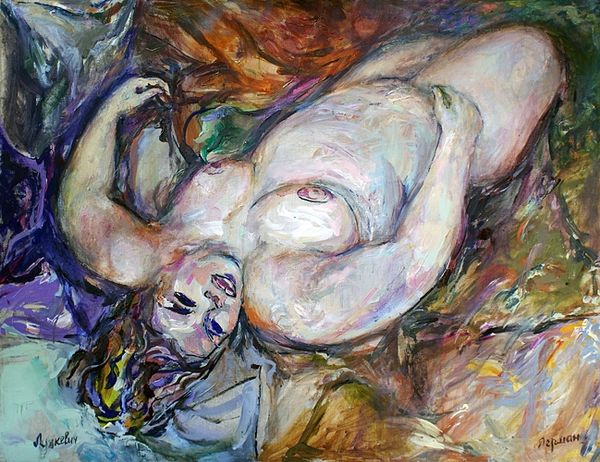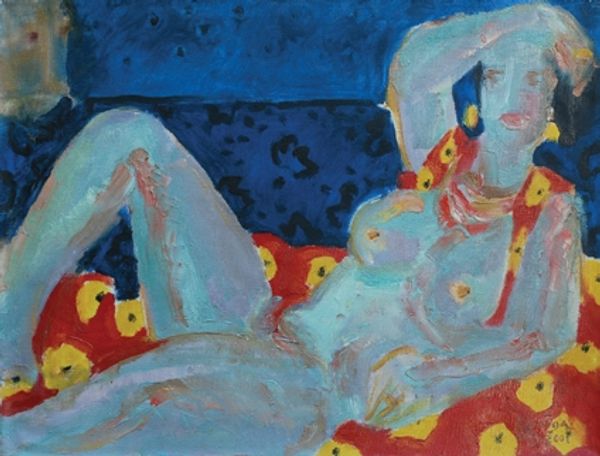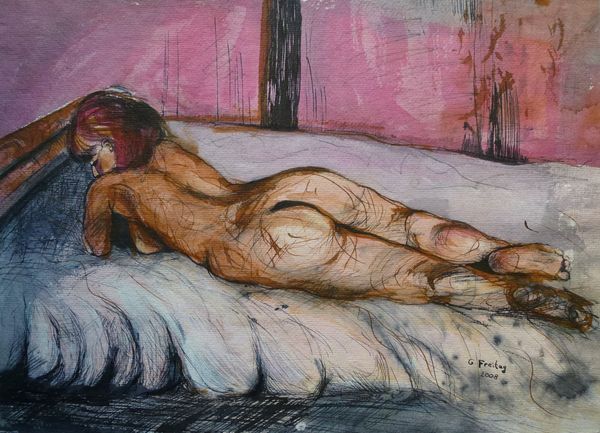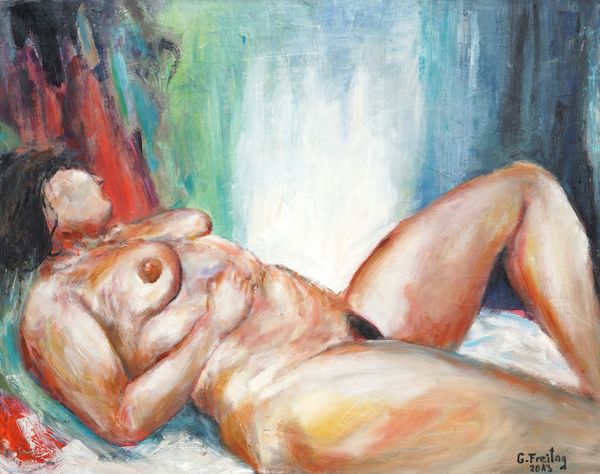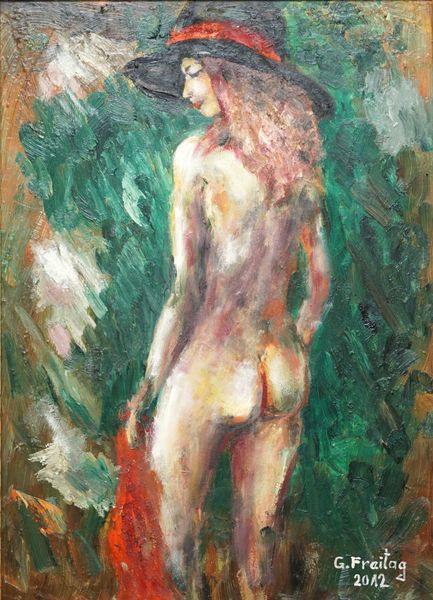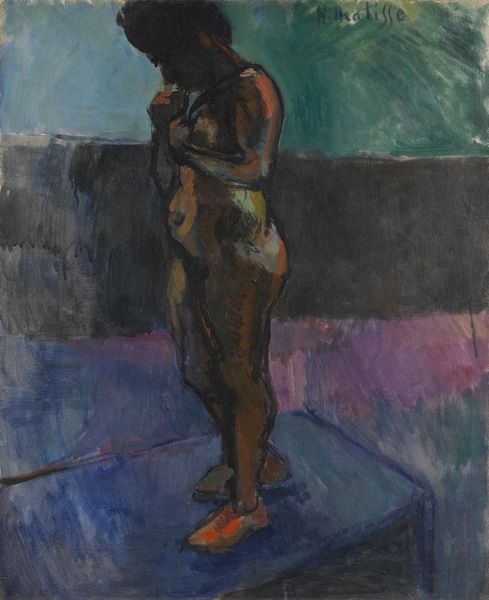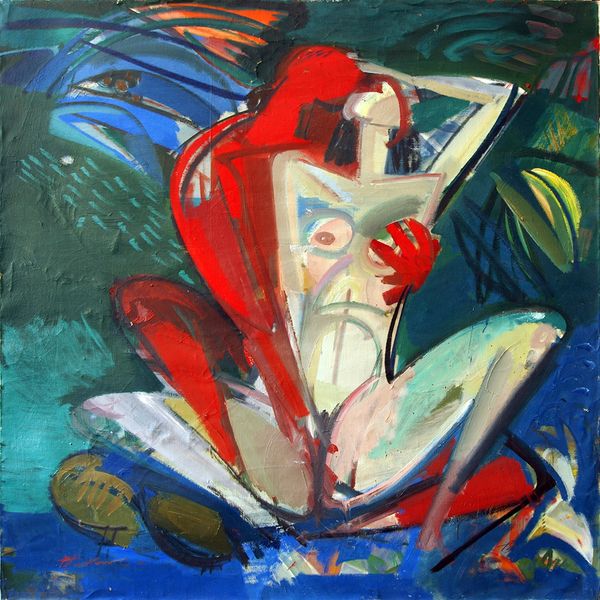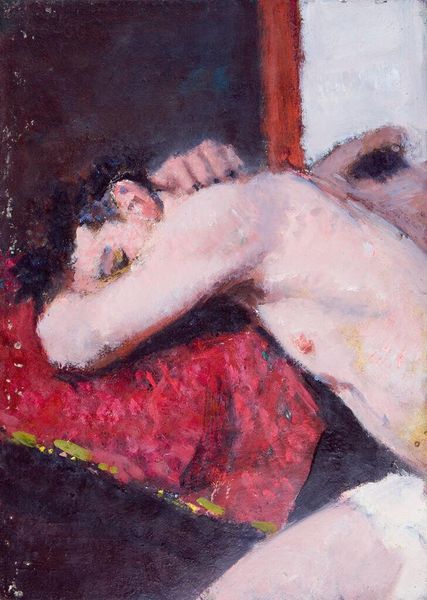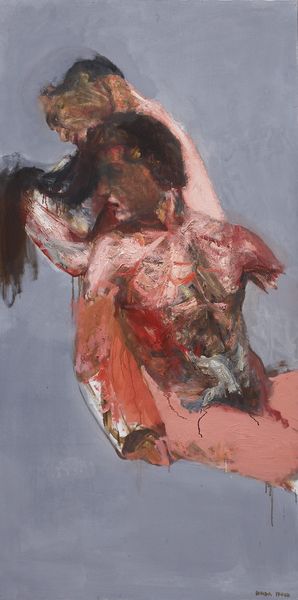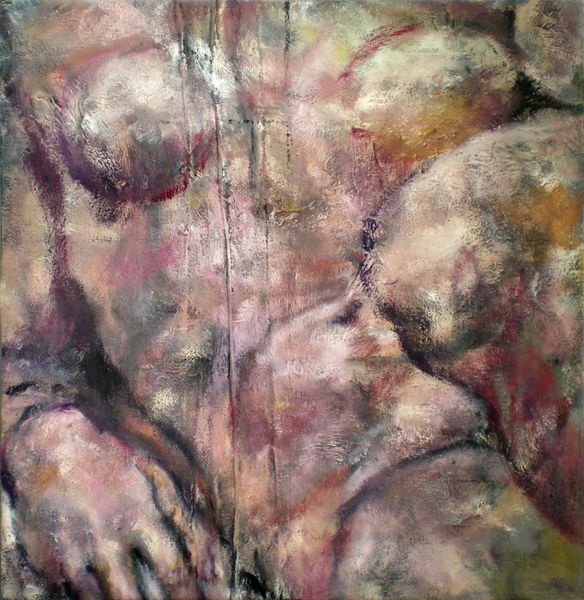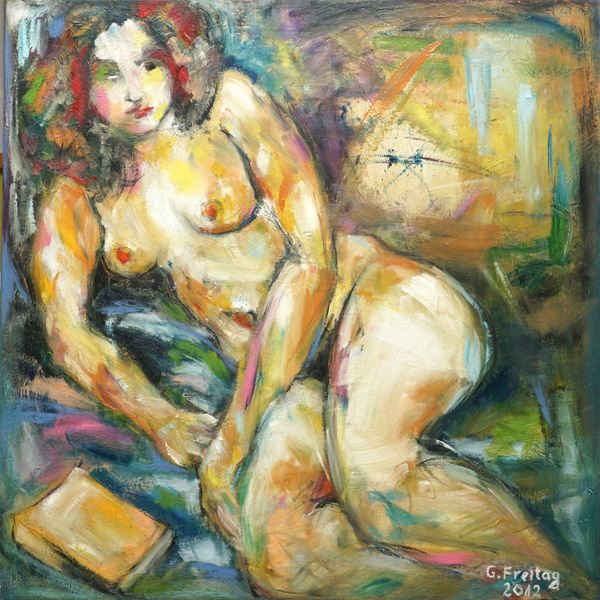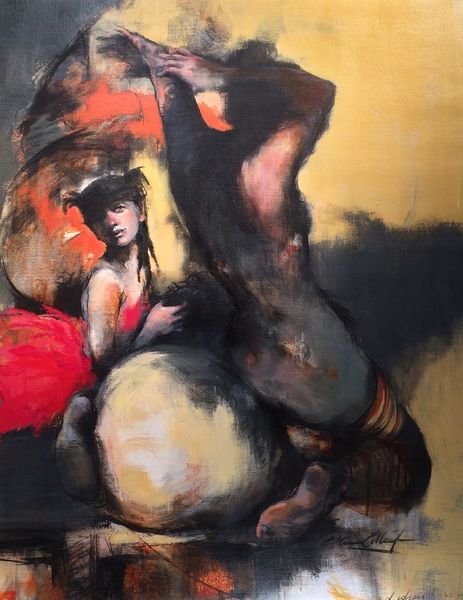
oil-paint, acrylic-paint
#
abstract expressionism
#
oil-paint
#
acrylic-paint
#
figuration
#
female-nude
#
neo expressionist
#
acrylic on canvas
#
neo-expressionism
#
underpainting
#
nude
Dimensions: 100 x 100 cm
Copyright: Copyright: Gazmend Freitag
Curator: Gazmend Freitag’s “The Green Stockings,” realized in 2012, immediately strikes me with its bold and visceral quality. What’s your initial reaction? Editor: Intense. The colours are doing so much, particularly that turquoise background against the earthy tones of the figure. There’s a raw sensuality, almost confrontational in its directness. Curator: Precisely! Freitag works here in a mode that strongly evokes the Neo-Expressionist movement. Considering the art historical and social moment from which it emerges, we must remember the figurative painting revival it mounted as resistance to Minimalism. What do you see here of the politics of figuration? Editor: Absolutely, there’s a reclaiming of the body. You see how Freitag uses a female nude, situating this painting in an art historical canon that traditionally presented the female body as an object. However, there is agency here in the composition—how the figure is framed. She’s not passively on display. Her gaze, although obscured, demands consideration. I also note that title -- “The Green Stockings”. This directs us. What significance does clothing play in the performance of identity, gender, sexuality? Curator: Fascinating point about the title’s provocation. Looking at Freitag's technical approach, we observe impasto layering, visible brushstrokes – very characteristic of Expressionism. The textured surfaces are far from photographic smoothness, suggesting something beyond pure mimesis, pointing towards inner states perhaps. The visible traces of the artist's hand push back against any easy sense of commodification or frictionless viewing of the body. Editor: Agreed. This raw handling allows for layers of meaning, it disrupts a clean, easy read of the subject and instead complicates ideas around objectification and spectatorship, allowing us to view the subject through a lens of identity politics. This allows for deeper conversation. Curator: It's interesting how Freitag uses what at first appears like conventional art-historical genre — the nude — and yet through colour choices and the active paint surface and provocative naming destabilizes any straightforward interpretation. It creates room for dialogue about the body, its representations, and social contexts. Editor: It reminds us that what is presented on the canvas, even in familiar forms like the nude, can be a space to reconsider entrenched notions about gender, representation, and power. Curator: Yes, a vital reminder that echoes still in current debates on contemporary art! Editor: Indeed. A piece that proves beauty lies in these layers of narrative, friction, and engagement.
Comments
No comments
Be the first to comment and join the conversation on the ultimate creative platform.
